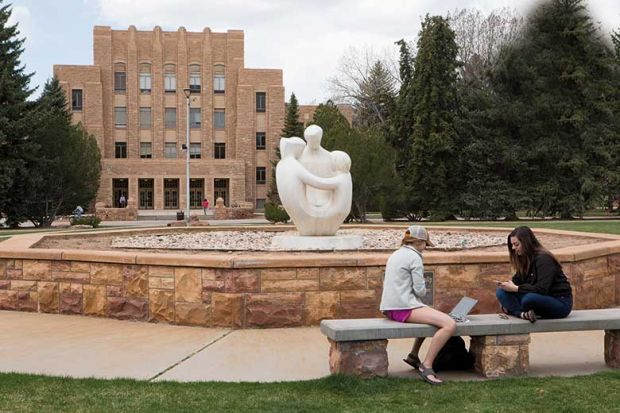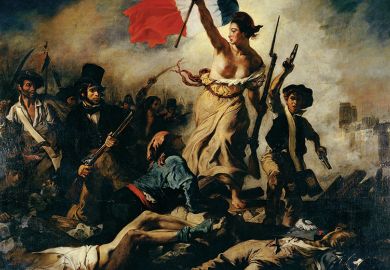In 2012, there were countless celebrations of the 150th anniversary of the Morrill Act. That landmark legislation funded the land-grant movement, which would support public colleges and universities through the proceeds from selling federal lands. Despite his preoccupation with the Civil War, President Lincoln signed the law in 1862. Only the absence of the Confederate states allowed sufficient votes for passage.
If the celebrations renewed appreciation of the millions who had received undergraduate degrees from land-grants over the years, they often repeated mistaken beliefs about the movement. More than any previous scholar, Nathan Sorber has now corrected these lingering misconceptions.
First and foremost, public higher education began before the Morrill Act. Several earlier public schools, including the College of William and Mary and the universities of Georgia, Michigan, North Carolina and Virginia, had long educated many students unable to afford private schools such as Harvard, Yale and Princeton. Ironically, these earlier public institutions often looked down on the official land-grants – with the University of Michigan, for example, persistently dismissing Michigan State as a “cow college”.
If the traditional interpretation was that the land-grant movement constituted a wave of mass democracy that transformed the US, Sorber argues that the movement was unwelcoming to both women and African Americans. Morrill himself opposed coeducation but generally failed to prevent it. Meanwhile, the gradual development of home economics, or “domestic science”, as a legitimate scientific field equal in status to, say, chemistry provided professional opportunities for women in addition to the historically less prestigious fields of nursing, librarianship and school teaching.
Furthermore, the original land-grant schools – which were outside the South – were inhospitable to non-white students. Most Midwestern land-grants even had student-run Ku Klux Klan campus rallies. As for the land-grant colleges established in the South after the 1890 Second Morrill Act, racist Jim Crow laws led to strictly segregated institutions. State funding for the African American schools was always well below that for their whites-only counterparts.
Sorber debunks such classic scholarly studies as Earle Ross’ Democracy’s College (1942), which argue that the land-grant movement was homogeneous. This was hardly the case, even within the same region. Take New England. In Connecticut, New Hampshire and Rhode Island, primarily private existing colleges – Yale, Dartmouth and Brown – divested themselves of what then became the fully public and autonomous universities of Connecticut, New Hampshire and Rhode Island. By contrast, the semi-private University of Vermont remained a land-grant primarily because of its powerful representative, then senator, Justin Morrill himself. By contrast, too, what became the land-grant University of Maine came about without any such divestment, albeit after overcoming opposition from the condescending private Bowdoin College.
Beyond this, the eventual triumph of Morrill’s vision of cutting-edge research and teaching in science, engineering and agriculture, plus the liberal arts, for all land-grants was hardly assured for decades. Many traditional farmers wanted their children returning home after college and only minimally applying new agricultural science to their homesteads. Moreover, once the Populist Movement arose in the Midwest in the late 19th century, that anti-intellectual crusade fuelled further hostility towards public higher education. Eventually a compromise was reached in which watered-down short-term and cooperative extension courses catering to farmers became popular.
Interestingly, many land-grant graduates who hailed from farms never returned there but instead, by choice, became businesspeople, government officials, doctors, dentists and academics. Indeed, many land-grants had a preponderance of non-agricultural majors.
Clearly written and compellingly argued, Nathan Sorber’s Land-Grant Colleges and Popular Revolt should be read by every land-grant institution graduate and faculty and staff member, and by all high government officials who deal with public higher education.
Howard P. Segal is professor of history at the University of Maine. His history of the University of Maine from 1965 to 2015, Becoming Modern (co-edited with Deborah Rogers), will be published this year.
Land-Grant Colleges and Popular Revolt: The Origins of the Morrill Act and the Reform of Higher Education
By Nathan M. Sorber
Cornell University Press 258pp, £41.00
ISBN 9781501715174
Published 15 December 2018
POSTSCRIPT:
Print headline: Equal access – but not for all
Register to continue
Why register?
- Registration is free and only takes a moment
- Once registered, you can read 3 articles a month
- Sign up for our newsletter
Subscribe
Or subscribe for unlimited access to:
- Unlimited access to news, views, insights & reviews
- Digital editions
- Digital access to THE’s university and college rankings analysis
Already registered or a current subscriber?








